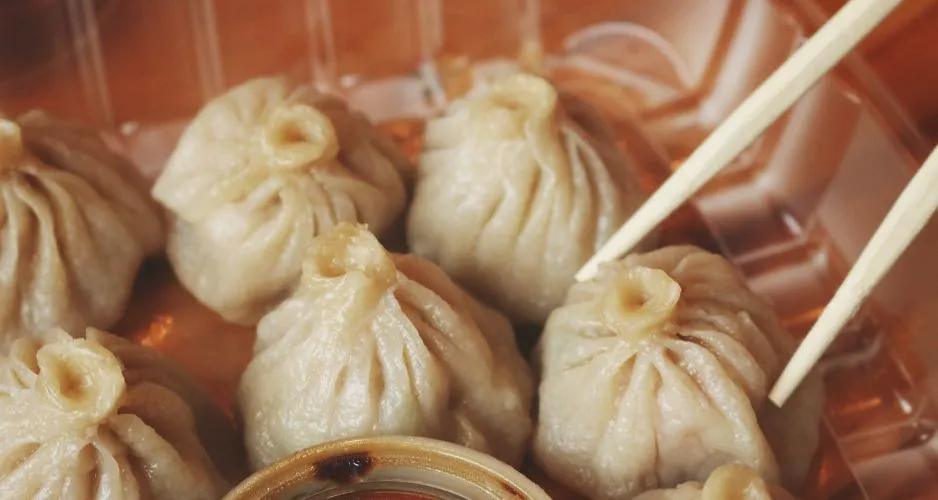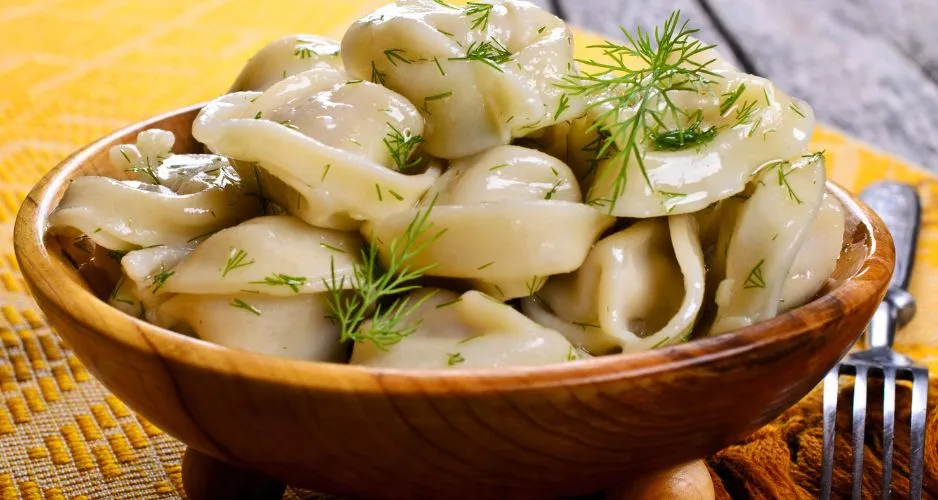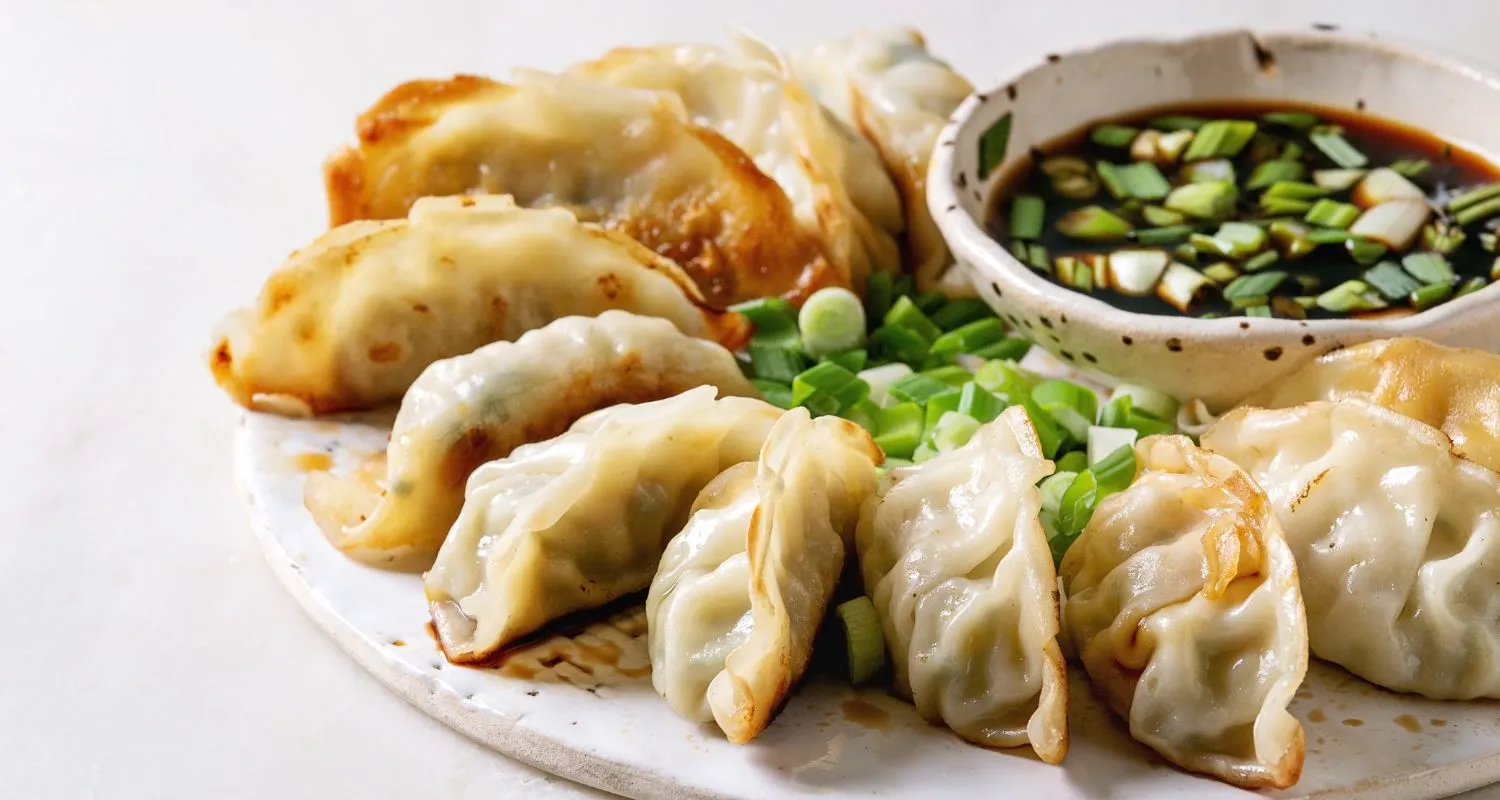Dumplings, those delightful pockets of dough, have captured the hearts and palates of people around the globe. From the bustling streets of Shanghai to the cozy kitchens of Poland, dumplings represent more than just a meal; they embody tradition, culture, and the universal language of comfort food. In this comprehensive exploration, we’ll dive into the world of dumplings, uncovering their rich history, diverse types, and cultural significance. Prepare to embark on a flavorful journey that celebrates this beloved dish in all its forms.
What Are Dumplings?
Dumplings are a global culinary phenomenon. At their core, they consist of dough wrapped around a filling. This filling can be as varied as the regions they come from, ranging from meats and vegetables to sweet concoctions. The dough, too, can be made from different flours, leading to a myriad of textures and flavors.
The Global Appeal of Dumplings
So, why do dumplings enjoy such widespread popularity? Well, for starters, they’re incredibly versatile. Whether steamed, boiled, or fried, dumplings can adapt to any taste preference or dietary requirement. They’re the ultimate comfort food, offering a satisfying bite that’s both hearty and heartwarming.
Moreover, dumplings have a way of bringing people together. They’re often prepared in large quantities, shared among family and friends during celebrations or simply as a way to enjoy a communal meal. This sense of togetherness, combined with the deliciousness of dumplings, makes them a favorite across continents.
The History and Evolution of Dumplings
The Origins of Dumplings
The story of dumplings stretches back centuries, rooted in the need for nourishing, simple food that could be made from basic ingredients. Historians suggest that dumplings, in one form or another, originated in ancient China. From there, they spread across the Silk Road, evolving and adapting to local tastes and ingredients.
Dumplings Around the World
As dumplings traversed continents, they took on new forms. In Asia, jiaozi and gyoza became staples, while Europe embraced varieties like the pierogi and manti. Each region infused its local flavors, creating a rich tapestry of dumpling diversity.
Asia’s Diverse Dumplings
In Asia, dumplings are a culinary mainstay. China’s jiaozi, for example, are traditionally enjoyed during Chinese New Year, symbolizing prosperity. Japan’s gyoza, on the other hand, are pan-fried to perfection, offering a crispy texture that contrasts with the tender filling inside.
European Varieties
Europe’s dumpling scene is equally vibrant. Poland’s pierogi are filled with everything from potatoes and cheese to fruits for a sweet treat. The manti of Eastern Europe and Central Asia are often served with a yogurt sauce, highlighting the fusion of flavors that dumplings can offer.
Dumplings in the Americas
Even the Americas have their version of dumplings, from the empanadas of South America to the chicken and dumplings of the southern United States. These variations show how this dish have been embraced and adapted worldwide, becoming a part of the local culinary landscape.
In this journey through the history and evolution of dumplings, we see a dish that has transcended its humble beginnings. Dumplings are more than just food; they are a reflection of cultural identity and historical migration, a testament to the power of simple ingredients to bring joy and comfort. As we explore further, we’ll uncover the many ways dumplings continue to delight and unite people across the globe.
Types of Dumplings
Main Ingredients and Preparation Methods
Dumplings boast an incredible variety, shaped by regional ingredients and culinary traditions. At their heart, they feature a combination of dough and filling that can vary widely.

Common Ingredients
The dough for dumplings usually involves flour, water, and sometimes eggs, creating a canvas for the filling. Fillings range from ground meats and seafood to vegetables and even sweet concoctions in some cultures. This versatility allows dumplings to cater to a wide array of taste preferences.
Cooking Techniques: Boiled, Steamed, Fried
The cooking method adds another layer of diversity. Boiled dumplings, like the Chinese shui jiao, offer a tender bite. Steamed varieties, such as xiaolongbao, are known for their juicy fillings. Fried dumplings, including the Japanese gyoza, present a crispy exterior that many find irresistible.
Regional Specialties
Each region brings its unique twist to dumplings, showcasing local flavors and traditions.
Asian Dumplings: Jiaozi, Gyoza, Siomay
In Asia, dumplings serve as a staple in many countries. Jiaozi in China, gyoza in Japan, and siomay in Indonesia are just a few examples. Each type reflects its cultural heritage, whether it’s the festive jiaozi eaten during Chinese New Year or the siomay sold in Indonesian street markets.
European Version: Pierogi, Manti
Europe’s dumpling varieties are equally rich. Pierogi in Poland are beloved for their versatile fillings, from savory to sweet. Manti, found in Turkey and Central Asia, are often small and served with a garlic-yogurt sauce, highlighting the blend of flavors that make this dish so special.
Unique Varieties: Soup Dumplings, Potstickers
Some dumplings stand out for their unique preparation or presentation. Soup dumplings, or xiaolongbao, encase a burst of broth within their delicate skins. Potstickers, known as guotie in China, are fried and steamed to achieve a crispy bottom and tender top.
Dumplings, in all their forms, are a testament to the creativity and cultural expression found in cuisines around the world. They embody the idea that something as simple as dough and filling can become a dish celebrated for its complexity and flavor. As we continue to explore the cultural significance of this dish, we’ll see how these delightful dishes do more than just satisfy hunger—they bring people together, creating memories and fostering traditions.
Cultural Significance
Dumplings in Tradition and Celebrations
Dumplings are much more than a delicious snack; they’re steeped in tradition and play a pivotal role in celebrations across various cultures. Their significance goes beyond taste, embodying centuries of history, symbolism, and communal values.
Chinese New Year
In China, jiaozi dumplings are synonymous with the Lunar New Year celebrations. They symbolize wealth and prosperity, with their shape resembling ancient Chinese money. Families gather to prepare and enjoy them together, reinforcing bonds and welcoming the new year with hope and joy.
Eastern European Holidays
In Eastern Europe, pierogi are a staple during festive occasions, especially Christmas and Easter. Each filling has its own meaning, with some believed to bring luck or commemorate ancestors. The act of making pierogi is a communal affair, bringing families and communities together in preparation and celebration.
Symbolism and Beliefs
Dumplings carry rich symbolism, with their preparation and consumption often linked to wishes for prosperity, health, and unity.
Prosperity and Family Unity
The communal preparation of dumplings, particularly during significant festivals, is a gesture of unity and love. It’s a time for families to come together, share stories, and pass down traditions from one generation to the next. This shared experience strengthens familial ties and enriches the cultural fabric of communities.
Dumplings’ cultural significance extends beyond their ingredients and preparation methods. They are a medium through which stories are told, traditions are preserved, and communities are united. As we explore the myriad ways to enjoy this recipe, we’ll delve into the practical aspects of savoring this global comfort food, from serving suggestions to the art of dumpling making.
How to Enjoy Dumplings
Serving and Pairing Suggestions
Dumplings are incredibly versatile, making them a delightful addition to any meal. Whether you’re enjoying them as a main dish or a side, the right accompaniments can elevate the dumpling experience.

Dipping Sauces and Condiments
A key to enhancing the flavor of dumplings is the dipping sauce. A mix of soy sauce, vinegar, and chili oil can add a tangy and spicy kick. For those who prefer a milder taste, a simple soy sauce or a sesame oil blend offers a subtle enhancement.
Accompaniments
Pairing dumplings with a side of steamed vegetables or a light broth can balance the meal, making it both satisfying and wholesome. For a more substantial feast, consider adding a side of rice or noodles.
DIY Dumpling Making
One of the joys of dumplings is the ability to make them at home. It’s a fun activity that allows for creativity and can be a wonderful way to spend time with family and friends.
Step-by-Step Guide
- Prepare the Filling: Mix your chosen ingredients—meat, vegetables, or a combination of both—with seasonings to taste.
- Make the Dough: Combine flour and water to form a smooth dough. Roll it out thinly and cut into circles.
- Fill and Fold: Place a small amount of filling in the center of each dough circle. Fold the dough over the filling and pinch the edges to seal.
- Cook: Choose your cooking method—boil, steam, or fry them until they’re cooked through.
Tips for Perfect Dumplings
- Keep the dough moist by covering it with a damp cloth while you work.
- Don’t overfill the dumplings to prevent them from bursting during cooking.
- Experiment with different folds and shapes to find your favorite.
Making this savory at home is not only a culinary adventure but also a bridge to understanding and appreciating the cultures from which they originate. As we wrap up our journey through the world of dumplings, we’ll reflect on the universal appeal of this humble dish and its ability to bring people together, transcending cultural and geographical boundaries.
FAQs
Frequently Asked Questions
What is the most popular type of dumpling?
While popularity varies by region, jiaozi in China, pierogi in Poland, and gyoza in Japan are among the most beloved. Each type reflects its cultural heritage and culinary traditions.
How do you eat dumplings traditionally?
Traditionally, dumplings are enjoyed with chopsticks and dipped in a sauce that complements their filling. In many cultures, eating these dish is a communal experience, shared among family and friends.
Can dumplings be vegan or vegetarian?
Absolutely! Dumplings are incredibly versatile. Fillings can range from mixed vegetables to tofu and beyond, making them a delightful option for vegans and vegetarians alike.
What is a dumpling made of?
Dumplings are versatile and can be made from a variety of ingredients. Traditionally, they consist of a dough made from flour, water, and sometimes egg, which is then filled with meat, vegetables, or a combination of both. Furthermore, the dough can also be made from potatoes, bread, or rice, with each variation offering a distinct texture and flavor profile.
Are dumplings healthy?
Dumplings can be part of a healthy diet when consumed in moderation. They can be nutritious if filled with vegetables or lean proteins. However, they can also be high in calories and carbohydrates, especially if they are fried. Steamed or boiled they are a healthier option, and incorporating a variety of fillings can enhance their nutritional value.
What is dumplings to English?
The term “dumplings” refers to a broad category of dishes that consist of pieces of dough, which may or may not contain a filling. The dough can be made from various ingredients, and the fillings can range from sweet to savory. they are known by different names and can be found in many cultures around the world.
What is so special about dumplings?
Dumplings hold a special place in many cultures due to their versatility, variety, and the communal aspect of their preparation and consumption. They can be adapted to suit any taste or dietary requirement, making them universally beloved. Moreover, it often symbolize good fortune and are a staple during festive celebrations in several cultures.
Which country invented dumplings?
The origin of dumplings is often attributed to China, with historical records suggesting they were invented over 1,800 years ago during the Eastern Han Dynasty. Nevertheless, many cultures have developed their own versions, making it a truly global dish.
Culinary Symbolism in Film
A Hollywood Tribute to Culinary Traditions
The cultural resonance of this beloved dish has even reached Hollywood, most notably through Pixar’s short film Bao. Directed by Domee Shi, this poignant narrative delves into themes of family, tradition, and the immigrant experience, all encapsulated within the story of a single, steamed bun. Shi’s personal narrative, inspired by her upbringing as the daughter of immigrants in Canada, infuses the film with depth and authenticity. The clever play on the word “bao,” which can mean both “steamed bun” and “precious” in Chinese, underscores the symbolic weight these culinary creations carry in Chinese culture.
Symbolic Meanings and Traditions
Beyond their taste, these culinary delights are imbued with deep symbolic meanings within Chinese culture, playing a central role in celebrations, especially the Lunar New Year, symbolizing prosperity, health, and family unity. The tradition of making and sharing them during these times is as much about fostering togetherness and honoring tradition as it is about culinary enjoyment.
- Prosperity and Wealth: The custom of finding a coin in one during the Lunar New Year symbolizes imminent wealth. Similarly, their yellow hue represents gold and affluence, aligning those who partake with prosperity.
- Health and Growth: The names of various types, often homophones for words with auspicious meanings, express wishes for health, growth, and continuous prosperity. This linguistic nuance adds another layer of cultural depth to the experience.
Dumplings, in their myriad forms, have indeed captured hearts and stomachs across the globe. Significantly, they stand as a testament to the simplicity and richness of culinary traditions, embodying the comfort and joy of sharing a meal. From the jiaozi of China to the pierogi of Poland, they celebrate cultural diversity and culinary innovation.
Moreover, their universal appeal lies not just in their deliciousness but also in their remarkable ability to foster connections and create memories. For instance, whether it’s gathering around the kitchen table to wrap dumplings for a festive celebration or simply enjoying a meal with loved ones, they have a unique way of bringing people together.
Furthermore, as we’ve journeyed through the history, types, and cultural significance of this dish, it has become abundantly clear that this humble dish is much more than mere food. Indeed, it’s a global language of love and unity, serving as a reminder that the simplest things often hold the deepest meaning. Therefore, the next time you enjoy a dumpling, remember that you’re partaking in a tradition that spans centuries and continents, a delicious link to our shared human experience.
